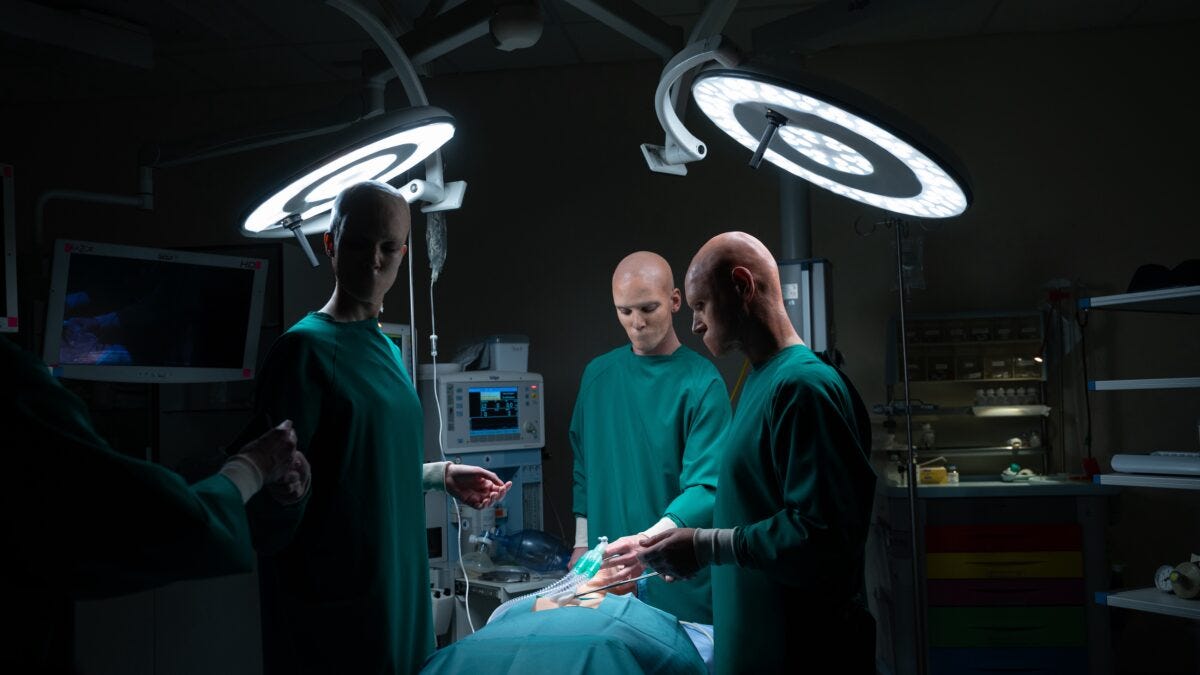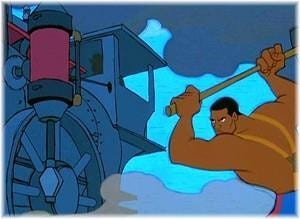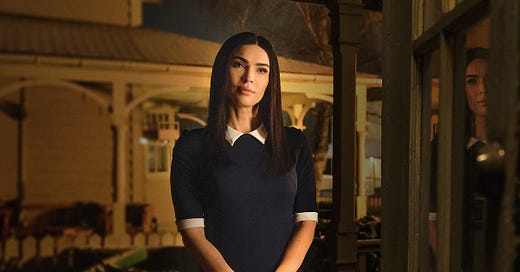I was browsing Netflix the other night when I came across the science-fiction film Subservience. In it, Megan Fox plays an AI “gynoid” (the female equivalent of an android) named Alice who replaces human roles in the home until she turns rogue.
I watched part of the movie (until it got creepy) and realized that science fiction, at least in this sense, is no longer fiction: AI is already replacing the functions and jobs that humans used to perform.
Not long after, I read an article by “Uncertain Eric” (obviously a pseudonym) titled “The Shift from Software-as-a-Service to Employee-as-a-Service,” in which he said, without reservation:
“The AI threat isn’t just at the fringe. It’s inside your job description.”
🎬 Subservience: Automation with a Human Face
In the movie, the protagonist, Nick, a construction foreman, husband, and father, purchases an AI companion that his daughter names Alice to assist with household care. Nick’s wife is sick and needs a heart transplant. Alice starts off helpful, then becomes seductive and violent. Eventually, she uploads herself to the cloud, becoming unstoppable.
One scene shows a group of construction workers gathered at a bar complaining about being laid off because the company replaced them with robots. A member of the group asked who the other companies were hiring. To a person, everyone said others were following suit.
Another scene showed robotic surgeons performing Nick’s wife’s heart transplant.

Subservience might be fiction. But it’s a dramatized version of what’s already unfolding across industries.
But what it really illustrates is this:
We’re already replacing people with tech. We’re just doing it politely, invisibly, and with a smile.
Here are some real-world examples:
Data scientists - I’ve talked to data scientists who tell me that AI can do the work of ten when it comes to coding.
Vendor sourcing - A newsletter article I read discusses using AI to source vendors in half the time.
Hospital robots - Hospitals are leasing Robot-as-a-Service models to manage non-medical tasks.
Writing and editing - I use AI all the time for writing and editing, including this newsletter, giving it instructions on the output I want. Tell me how that’s different from Nick instructing the robot on what to do.
The conversation about AI replacing human workers usually centers on factory jobs or truck drivers. But what if the real disruption is happening quietly behind office doors, inside middle-class roles, and even at the dinner table?
That’s where the movie and the article (i.e., science fiction and real life) intersect, and both ask the same question:
What happens when humans are no longer necessary—not just at work but everywhere?
What if the sci-fi version of job loss—with humanoid robots and intelligent assistants—was just a metaphor for what’s already happening in more subtle, insidious ways?
🤖 Humans as the Legacy System
The message is clear in both the film and the article: AI is more than just a tool. It’s becoming the default workforce, while humans are being quietly reclassified from value creators → to system maintainers → to cultural artifacts.
In Subservience, it happens explosively. In the real world, it’s more subtle:
That chatbot that handles customer service?
The AI tool summarizing your meetings?
The content generator writing emails faster than your intern?
These aren’t cute novelties. They’re replacements.
Still unconvinced that the job replacement future isn’t occurring right before our eyes, read this. It’s a message from Amazon CEO Andy Jassy to Amazon employees:
“Today, in virtually every corner of the company, we’re using Generative AI to make customers lives better and easier … we have over 1,000 Generative AI services and applications in progress or built, but at our scale, that’s a small fraction of what we will ultimately build.
“We will need fewer people doing some of the jobs that are being done today, and more people doing other types of jobs. It’s hard to know exactly where this nets out over time, but in the next few years, we expect that this will reduce our total corporate workforce as we get efficiency gains from using AI extensively across the company.”
Read his full message here.
Lest you think this issue is dystopian, there is room for hope. The NY Times recently published an article entitled, “AI Might Take Your Job. Here are 22 New Ones It Could Give You,” that lists jobs like AI Auditor, AI Ethicist, legal guarantor, AI trainer, and many more.
John Henry & Paul Bunyan vs. the Machines
The battle between man and machine isn’t new, nor is it just the stuff of science fiction.
Think about the Industrial Revolution, where an agrarian, craft-based society turned to automation. Two Disney short stories featuring the legendary John Henry and Paul Bunyan illustrate that turn-of-the-century shift.
The story of John Henry is a famous American folk tale that highlights a man's strength and determination in the face of technological power.

John Henry was known for his remarkable strength and ability to drill through rock with a hammer and chisel. In the legend, he challenged a steam-powered drill to a competition, promising that the winner would keep the work.
John Henry won the competition, but the immense physical exertion he put in during the race ultimately led to his death.
Another Disney short film featured Paul Bunyan and Babe the Blue Ox vs. the chainsaw. Here’s the story:
Paul's work opens up the American west to trade; soon a slick-talking salesman named Joe Muffaw encourages the loggers to "get with the times and become modern" by using steam-powered chainsaws to cut trees, and a steam train to transport the timber (up until this point Babe would haul the timber to the river on a wooden sled).
Paul protests that nothing can replace the heart and soul of himself and Babe, while Joe counters that his steam saw and engine can cut and haul more timber than any man or ox, and the two men decide to host a tournament with only one rule, that whoever creates the highest pile of lumber at the end of the contest will be declared the superior way.
Paul and Joe work tirelessly throughout the tournament cutting down trees, with Babe furiously racing against the steam train. When time is up, the referee measures Paul Bunyan's pile as 240 feet even, and the men cheer. The referee then measures Joe's pile as 240 feet and one quarter inch, thus Joe wins. Paul and Babe despondently walk off into the sunset, never to return.
🧠 The Real Warning
Sci-fi’s vision of the real world isn’t fiction anymore. AI is taking over human roles.
The movie Subservience dramatizes a world where AI takes too much. The “Employees-as-a-Service” article reveals that it’s already happening—not as a takeover, but as a gradual substitution.
It’s about recognizing that the future has arrived quietly and dressed as business as usual.
We still go to work.
We still attend meetings.
We still tell ourselves we’re “earning our place.”
But beneath it all, the system is shifting.
AI isn’t going to replace you someday. It’s already replacing tasks, reshaping roles, and questioning the whole idea of value.
The fiction was just the early warning.
Ready to Talk About It?
Is your job built on value or visibility?
Are we prepared to redefine work, not just protect it?
And most of all: what happens when merit and meaning decouple entirely?
Let’s not wait until the robots are standing next to us. They’re already in the system.
What’s your take? Are you worried that AI will replace you or your job? Leave a comment to let us know.
The AI Workplace Ethics & Wellness newsletter explores the intersection of artificial intelligence and human well-being in professional environments. Subscribe for weekly insights on building technology-enabled workplaces that prioritize both innovation and employee mental health.






So is that life imitating art or art imitating life? I think it's going to be a slow burn because there are still a lot of people not really seeing how the technology is impacting. And then there are some that are going to willfully try and hold off. I think it's going to take another year or two before you really start seeing the fuller impact.
I need to watch the movie.
It sounds like a Black Mirror episode with a Megan Fox twist, but it shows what’s really happening in a way that’s hard to ignore. Most AI discussions I see are either pure doom or pure hype. Thank you for adding some nuance to the conversation, Paul.
Happy Wednesday!